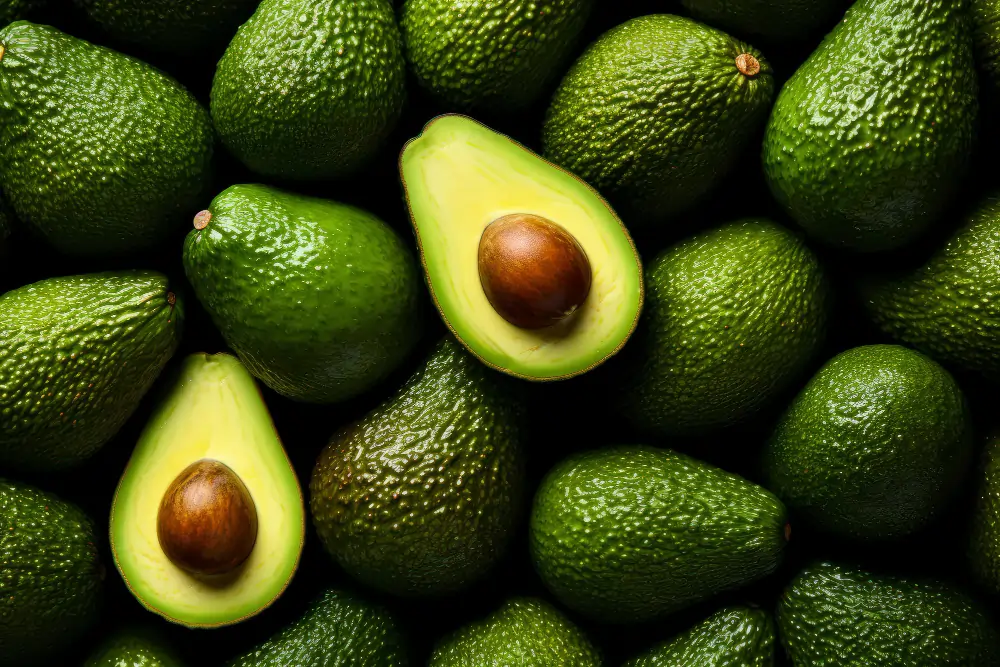
Introducing
Are you tired of dealing with joint pain and discomfort? Do you wish there was a natural and effective way to support your cartilage health? Look no further! In this blog article, we will explore the power of superfoods that can help transform your joints and promote cartilage growth. These nutrient-rich foods provide essential vitamins and minerals and anti-inflammatory properties that can alleviate pain and improve overall joint function. So, get ready to discover the top 7 superfoods that will nourish your joints and bring back the joy of pain-free movement!
1. Walnuts: The Brainy Nut for Strong Joints
Walnuts are not just a delicious snack; they also offer numerous health benefits, particularly when it comes to supporting strong joints. This humble nut is rich in omega-3 fatty acids, which play a vital role in reducing inflammation and maintaining cartilage integrity. In this article, we will explore the benefits of walnuts for joint health and share some creative ways to incorporate them into your meals and snacks.
Omega-3 Fatty Acids for Joint Health
Walnuts are an excellent source of omega-3 fatty acids, specifically alpha-linolenic acid (ALA). These fatty acids are renowned for their anti-inflammatory properties, helping to reduce inflammation in the joints. By incorporating walnuts into your diet, you can potentially alleviate joint pain and discomfort. Additionally, omega-3 fatty acids promote cartilage integrity, contributing to the overall health and flexibility of your joints.
Creative Ways to Enjoy Walnuts
1. Walnut Trail Mix: Create a delicious and nutritious trail mix by combining walnuts with other nuts, dried fruits, and a sprinkle of dark chocolate chips. It makes for a satisfying snack on the go while providing joint-friendly nutrients.
2. Walnut-Crusted Chicken or Fish: Crush walnuts and use them as a coating for chicken breasts or fish fillets. Bake or pan-fry for a crunchy and flavorful dish that adds a dose of omega-3s to your meal.
3. Walnut Pesto Pasta: Upgrade your pasta dish by blending walnuts, fresh basil, garlic, Parmesan cheese, and olive oil to make a vibrant walnut pesto. Toss it with your favorite pasta for a nutritious and flavorful twist.
4. Walnut Smoothie Bowl: Blend walnuts with frozen berries, Greek yogurt, and a splash of almond milk to create a creamy and nutritious smoothie bowl. Top it off with fresh fruits, granola, and a sprinkle of walnuts for added crunch.
5. Walnut Energy Balls: Combine walnuts, dates, cocoa powder, and a pinch of salt in a food processor. Roll the mixture into small balls and refrigerate for a quick and energizing snack that supports joint health.
2. Seaweed: The Ocean’s Gift to Your Knees
When it comes to promoting joint health, seaweed, the ocean’s gift, offers a treasure trove of minerals. With its rich iodine, calcium, and magnesium content, seaweed is a natural source of nutrients that can support the health and strength of your knees. In this article, we will delve into the mineral benefits of seaweed for joint health and explore different types of seaweed, such as nori, wakame, and kelp, along with their culinary uses.
Mineral Content for Joint Health
Seaweed is a powerhouse of essential minerals that play a vital role in maintaining healthy joints. Iodine, found abundantly in seaweed, is crucial for proper thyroid function. A healthy thyroid helps regulate metabolism, which influences joint health. Additionally, seaweed is an excellent source of calcium, a mineral essential for strong bones and joints. The presence of magnesium in seaweed also contributes to joint health by supporting bone density and reducing inflammation.
Types of Seaweed and Culinary Uses
1. Nori: Nori is a popular seaweed variety often used to wrap sushi rolls. It is thin, dark green, and has a delicate flavor. Apart from sushi, nori can be toasted and crumbled over salads, and rice dishes, or used as a garnish for soups.
2. Wakame: Wakame is a versatile seaweed commonly found in Japanese cuisine. It has a slightly sweet taste and a tender texture. Wakame can be used in soups, salads, or stir-fries, adding a unique flavor and a nutritious boost to your meals.
3. Kelp: Kelp is a large brown seaweed known for its robust flavor and high mineral content. It is often used in broths, stocks, and stews to enhance the umami flavor. Kelp can also be dried and ground into a powder, making it a convenient addition to smoothies or sprinkled over dishes as a nutrient-rich seasoning.
3. Avocado: Creamy Goodness for Flexible Joints

Avocados are not only known for their creamy texture and delicious taste but also for their remarkable benefits in promoting flexible joints. Packed with healthy fats, antioxidants, and vitamin E, avocados offer a wide range of nutrients that contribute to joint health. In this article, we will explore the high levels of healthy components in avocados and provide some tasty avocado-based recipes that nourish your joints.
High Levels of Healthy Fats, Antioxidants, and Vitamin E
Avocados are rich in monounsaturated fats, which are considered healthy fats. These fats provide lubrication to the joints, keeping them flexible and reducing the risk of joint stiffness or discomfort. Additionally, avocados contain antioxidants, such as carotenoids and tocopherols, which help protect the joints from oxidative stress and inflammation. Furthermore, avocados are an excellent source of vitamin E, a powerful antioxidant that supports joint health by reducing inflammation and protecting the joint tissues.
Tasty Avocado-Based Recipes for Joint Nourishment
1. Avocado Toast: Mash ripe avocado onto whole-grain toast and sprinkle with a pinch of salt, pepper, and a squeeze of lemon juice. This simple yet flavorful recipe provides a healthy dose of fats and nutrients for your joints.
2. Avocado Smoothie: Blend ripe avocado with your favorite fruits, such as bananas or berries, along with a liquid of your choice, such as almond milk or coconut water. This creamy and nutritious smoothie makes for a refreshing snack that nourishes your joints.
3. Avocado Salad: Create a vibrant salad by combining sliced avocados with mixed greens, cherry tomatoes, cucumbers, and a light vinaigrette dressing. Top it off with some nuts or seeds for added crunch and joint-friendly nutrients.
4. Guacamole: Mash ripe avocados with diced tomatoes, onions, cilantro, lime juice, and a pinch of salt. This classic dip is not only delicious but also an excellent way to enjoy the benefits of avocados while adding flavor to your meals.
5. Avocado Pasta Sauce: Blend ripe avocados with garlic, lemon juice, basil, and a touch of olive oil to create a creamy and nutritious pasta sauce. Toss it with your favorite pasta for a satisfying and joint-nourishing meal.
4. Bone Broth: Sip Your Way to Strong Cartilage
Bone broth has gained popularity for its numerous health benefits, especially when it comes to promoting strong cartilage and reducing joint pain. Rich in collagen, bone broth provides essential nutrients that support cartilage repair and overall joint health. In this article, we will explore how collagen in bone broth benefits cartilage and share easy bone broth recipes and tips for incorporating it into your daily meals.
Collagen and Cartilage Repair
Collagen is a protein found in abundance in bone broth, and it plays a crucial role in maintaining the health and integrity of cartilage. Cartilage is the flexible connective tissue that cushions our joints, allowing them to move smoothly. As we age or experience joint injuries, the production of collagen in our bodies decreases, leading to cartilage degeneration and joint pain. Consuming collagen-rich bone broth can help replenish collagen levels, support cartilage repair, and reduce joint pain. The amino acids in collagen also contribute to the formation of new cartilage cells, further aiding in the healing process.
Easy Bone Broth Recipes and Tips
1. Basic Bone Broth: Ingredients: Bones (chicken, beef, or any desired meat), water, vegetables (carrots, celery, onions), herbs, and spices. – Instructions: Place bones, vegetables, herbs, and spices in a pot. Cover with water and simmer on low heat for several hours, skimming off any impurities that rise to the surface. Strain the broth and store it in containers for later use.
2. Chicken Noodle Soup with Bone Broth: Ingredients: Bone broth, cooked chicken, vegetables (carrots, celery, onions), noodles, herbs (parsley, thyme), salt, and pepper. – Instructions: In a pot, combine bone broth, cooked chicken, vegetables, herbs, salt, and pepper. Simmer until the vegetables are tender. Add noodles and cook until they are done. Serve hot and enjoy the nourishing benefits of bone broth.
3. Bone Broth Smoothie: Ingredients: Bone broth, fruits (berries, banana), leafy greens (spinach, kale), almond milk, and honey (optional). – Instructions: Blend bone broth, fruits, leafy greens, almond milk, and honey until smooth. Enjoy this nutrient-packed smoothie as a refreshing and healthy snack.
Tips for Incorporating Bone Broth
– Use bone broth as a base for soups, stews, and sauces to add depth of flavor and nutritional value.
– Drink bone broth as a warm and comforting beverage on its own.
– Use bone broth instead of water when cooking rice or grains for added flavor and nutrients.
– Freeze bone broth in ice cube trays for convenient portioning and easy use in recipes.
5. Berries: Tiny Powerhouses for Joint Protection
Berries are delicious and colorful fruits packed with antioxidants, making them a great addition to any diet. Not only do they taste great, but they also offer numerous benefits for joint health. In this article, we will discuss how the antioxidant properties of berries, such as blueberries, strawberries, and raspberries, can protect and promote joint health. We will also suggest smoothie recipes and creative ways to enjoy these tiny powerhouses.
Antioxidant Properties of Berries
Berries contain high levels of antioxidants, such as flavonoids and anthocyanins. These compounds help protect the joints from oxidative stress and inflammation, which can lead to joint pain and stiffness. Additionally, berries contain vitamin C, which is essential for collagen production, a protein that supports joint health and flexibility. Moreover, the anti-inflammatory properties of berries can alleviate joint pain and improve mobility.
Smoothie Recipes and Creative Ways to Enjoy Berries
1. Berry Smoothie: Blend frozen berries, Greek yogurt, almond milk, and honey to create a delicious and nutritious smoothie. This recipe is perfect for breakfast or as a post-workout snack.
2. Berry Parfait: Layer Greek yogurt, fresh berries, and granola to create a colorful and healthy parfait. This recipe is perfect for a quick and easy breakfast or a tasty dessert.
3. Berry Salad: Combine mixed greens, fresh berries, feta cheese, and a balsamic vinaigrette dressing to create a delicious and healthy salad. This recipe is perfect for a light lunch or dinner.
4. Berry Chia Pudding: Mix chia seeds, almond milk, and a sweetener of your choice with mashed berries to create a healthy and filling pudding. This recipe is perfect for a quick and easy breakfast or snack.
5. Berry Salsa: Combine chopped strawberries, raspberries, jalapenos, red onion, cilantro, and lime juice to create a flavorful and healthy salsa. This recipe is perfect for serving with tortilla chips or as a topping for grilled chicken or fish.
6. Leafy Greens: Your Joint’s Best Friend

Leafy greens, such as spinach, kale, and other vibrant greens, are not only nutritious but also offer incredible benefits for joint health. Packed with essential vitamins and minerals like Vitamin C, Vitamin K, and Calcium, these greens provide the necessary nutrients to support strong and healthy joints. In this article, we will highlight the importance of leafy greens for joint health, provide ideas for incorporating them into salads, and suggest cooking methods to maximize their benefits.
Vitamins and Minerals in Leafy Greens:
Leafy greens are rich in vitamins and minerals that contribute to joint health. Vitamin C plays a crucial role in collagen synthesis, which is essential for maintaining the integrity of joint tissues. Vitamin K helps regulate calcium, preventing it from accumulating in the wrong places and promoting bone health. Calcium, a mineral found in leafy greens, is necessary for strong bones and can contribute to overall joint strength.
Salad Ideas with Leafy Greens
1. Classic Spinach Salad: Ingredients: Fresh spinach leaves, cherry tomatoes, sliced cucumbers, red onions, feta cheese, and a lemon vinaigrette dressing. – Instructions: Toss all the ingredients together in a bowl, drizzle with the lemon vinaigrette dressing, and enjoy a refreshing and nutritious spinach salad.
2. Kale and Quinoa Salad: Ingredients: Chopped kale leaves, cooked quinoa, diced avocado, roasted chickpeas, dried cranberries, and a balsamic vinaigrette dressing. – Instructions: Mix all the ingredients in a large bowl, drizzle with the balsamic vinaigrette dressing, and savor the flavors of this hearty and healthy salad.
Cooking Methods to Maximize Benefits
1. Sautéed Leafy Greens: Heat a small amount of olive oil in a pan. – Add chopped leafy greens and sauté until they wilt. – Season with salt, pepper, and a squeeze of lemon juice for added flavor. – Serve as a nutritious side dish or incorporate them into main courses like stir-fries or omelets.
2. Steamed Leafy Greens: Fill a pot with a small amount of water and bring it to a boil. – Place the leafy greens in a steamer basket or colander and steam for a few minutes until they are tender. – Season with your favorite herbs and spices before serving.
7. Turmeric: The Golden Spice for Happy Joints

Turmeric, a spice commonly used in Indian cuisine, has been gaining popularity for its remarkable health benefits, particularly for joint health. Curcumin, the active compound in turmeric, is known for its anti-inflammatory and antioxidant properties, making it a powerful natural remedy for joint pain and inflammation. In this article, we will dive into the benefits of curcumin, provide turmeric latte recipes, and suggest ways to incorporate turmeric into meals.
Curcumin and Its Anti-Inflammatory Effects
Curcumin, the active compound in turmeric, has potent anti-inflammatory effects that can help alleviate joint pain and inflammation. It works by inhibiting the production of pro-inflammatory molecules in the body, preventing them from causing damage to joint tissues. Additionally, curcumin’s antioxidant properties can protect cells from oxidative damage and further reduce inflammation.
Turmeric Latte Recipes
1. Classic Turmeric Latte: Ingredients: Turmeric powder, cinnamon, ginger, honey, and milk of your choice (dairy or non-dairy). – Instructions: Heat the milk in a saucepan, add the turmeric powder, cinnamon, ginger, and honey, and whisk until well combined. Pour the mixture into a mug and enjoy a warm and comforting turmeric latte.
2. Golden Milk Latte: Ingredients: Turmeric powder, black pepper, coconut oil, honey, and almond milk. – Instructions: In a saucepan, heat the almond milk until it starts simmering. Add the turmeric powder, black pepper, and coconut oil, and whisk until well combined. Pour the mixture into a mug, add honey to taste, and enjoy a delicious and nutritious golden milk latte.
Ways to Incorporate Turmeric into Meals
1. Turmeric Rice: Cook rice as per instructions. – Add turmeric powder, cumin, salt, and black pepper to the cooked rice and mix well. – Enjoy the flavorful and colorful turmeric rice as a side dish.
2. Turmeric Roasted Vegetables: Preheat the oven to 400°F. – Toss vegetables of your choice (e.g., cauliflower, sweet potatoes, carrots) with turmeric powder, olive oil, salt, and pepper. – Roast the vegetables in the oven for 20-25 minutes until they are tender and golden brown. – Savor the delicious and healthy turmeric roasted vegetables.
In conclusion, incorporating these seven superfoods into your diet can have a transformative effect on your joint health and promote cartilage growth. From the anti-inflammatory properties of turmeric and omega-3 fatty acids found in walnuts, each superfood brings its unique set of nutrients and benefits. Including these superfoods, such as leafy greens, berries, nuts, and bone broth, can provide the essential vitamins, minerals, and antioxidants needed to support cartilage health and overall joint function. By making these dietary changes and embracing a balanced and nutrient-rich eating plan, you can nurture your joints and pave the way for improved mobility and long-term joint well-being.



 Afrikaans
Afrikaans Albanian
Albanian Amharic
Amharic Arabic
Arabic Armenian
Armenian Azerbaijani
Azerbaijani Basque
Basque Belarusian
Belarusian Bengali
Bengali Bosnian
Bosnian Bulgarian
Bulgarian Catalan
Catalan Cebuano
Cebuano Chichewa
Chichewa Chinese (Simplified)
Chinese (Simplified) Chinese (Traditional)
Chinese (Traditional) Corsican
Corsican Croatian
Croatian Czech
Czech Danish
Danish Dutch
Dutch English
English Esperanto
Esperanto Estonian
Estonian Filipino
Filipino Finnish
Finnish French
French Frisian
Frisian Galician
Galician Georgian
Georgian German
German Greek
Greek Gujarati
Gujarati Haitian Creole
Haitian Creole Hausa
Hausa Hawaiian
Hawaiian Hebrew
Hebrew Hindi
Hindi Hmong
Hmong Hungarian
Hungarian Icelandic
Icelandic Igbo
Igbo Indonesian
Indonesian Irish
Irish Italian
Italian Japanese
Japanese Javanese
Javanese Kannada
Kannada Kazakh
Kazakh Khmer
Khmer Korean
Korean Kurdish (Kurmanji)
Kurdish (Kurmanji) Kyrgyz
Kyrgyz Lao
Lao Latin
Latin Latvian
Latvian Lithuanian
Lithuanian Luxembourgish
Luxembourgish Macedonian
Macedonian Malagasy
Malagasy Malay
Malay Malayalam
Malayalam Maltese
Maltese Maori
Maori Marathi
Marathi Mongolian
Mongolian Myanmar (Burmese)
Myanmar (Burmese) Nepali
Nepali Norwegian
Norwegian Pashto
Pashto Persian
Persian Polish
Polish Portuguese
Portuguese Punjabi
Punjabi Romanian
Romanian Russian
Russian Samoan
Samoan Scottish Gaelic
Scottish Gaelic Serbian
Serbian Sesotho
Sesotho Shona
Shona Sindhi
Sindhi Sinhala
Sinhala Slovak
Slovak Slovenian
Slovenian Somali
Somali Spanish
Spanish Sundanese
Sundanese Swahili
Swahili Swedish
Swedish Tajik
Tajik Tamil
Tamil Telugu
Telugu Thai
Thai Turkish
Turkish Ukrainian
Ukrainian Urdu
Urdu Uzbek
Uzbek Vietnamese
Vietnamese Welsh
Welsh Xhosa
Xhosa Yiddish
Yiddish Yoruba
Yoruba Zulu
Zulu